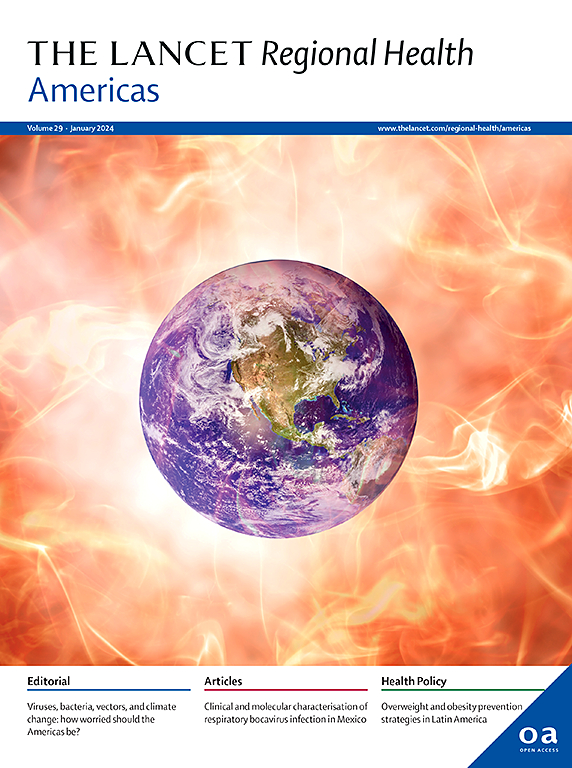World Health Organization priority antimicrobial resistance in Enterobacterales, Acinetobacter baumannii, Pseudomonas aeruginosa, Staphylococcus aureus and Enterococcus faecium healthcare-associated bloodstream infections in Brazil (ASCENSION): a prospective, multicentre, observational study
IF 7
Q1 HEALTH CARE SCIENCES & SERVICES
引用次数: 0
Abstract
Background
Carbapenem-resistant Enterobacterales (CRE), Acinetobacter baumannii (CRAB), Pseudomonas aeruginosa (CRPA), methicillin-resistant Staphylococcus aureus (MRSA) and vancomycin-resistant Enterococcus faecium (VRE) are listed by World Health Organization (WHO) as priority antimicrobial-resistant bacteria. Data on WHO Priority Antimicrobial resistance Phenotype (WPAP) bacteria from low- and middle-income countries are scarce. In this study, we investigated the occurrence of WPAP in healthcare-associated bloodstream infections (BSI) in Brazil, an upper-middle-income country in South America.
Methods
ASCENSION was a prospective, multicentre, observational study conducted in 14 hospitals from four of five Brazilian regions. Enterobacterales, A. baumannii, P. aeruginosa, S. aureus and E. faecium BSIs in hospitalised patients were analysed. The primary outcome was the frequency of WPAP among all bacteria of interest. Secondary outcomes were incidence-density of bacteria isolates in hospitalised patients, WPAP proportions within bacterial species, and 28-day mortality. PCR for carbapenemase genes was performed in carbapenem-resistant Gram-negative bacteria.
Findings
Between August 15, 2022, and August 14, 2023, 1350 isolates (1220 BSI episodes) were included. WPAP accounted for 38.8% (n = 524; 95% Confidence Interval 32.0–46.1) of all isolates, with CRE (19.3%) as the most frequent, followed by CRAB (9.6%), MRSA (4.9%), VRE (2.7%), and CRPA (2.4%). Incidence-density of all and WPAP isolates were 1.91 and 0.77/1000 patients-day, respectively. Carbapenem-resistant Klebsiella pneumoniae (CRKP) was the most common CRE, corresponding to 14.2% of all BSIs. A. baumannii isolates presented the highest proportion of WPAP (87.8%). Mortality rates were higher in patients with BSIs by WPAP than non-WPAP isolates. KPC (64.4%) was the predominant carbapenemase in CRE, followed by NDM (28.4%) and KPC + NDM co-production (7.1%). OXA-23 was the most frequent in CRAB.
Interpretation
A high frequency of WPAP bacteria, particularly CRKP and CRAB, were found in healthcare-associated BSIs in Brazil, posing them as a major public health problem in this country.
Funding
National Council for Scientific and Technological Development, Brazil.
求助全文
约1分钟内获得全文
求助全文
来源期刊

Lancet Regional Health-Americas
Multiple-
CiteScore
8.00
自引率
0.00%
发文量
0
期刊介绍:
The Lancet Regional Health – Americas, an open-access journal, contributes to The Lancet's global initiative by focusing on health-care quality and access in the Americas. It aims to advance clinical practice and health policy in the region, promoting better health outcomes. The journal publishes high-quality original research advocating change or shedding light on clinical practice and health policy. It welcomes submissions on various regional health topics, including infectious diseases, non-communicable diseases, child and adolescent health, maternal and reproductive health, emergency care, health policy, and health equity.
 求助内容:
求助内容: 应助结果提醒方式:
应助结果提醒方式:


